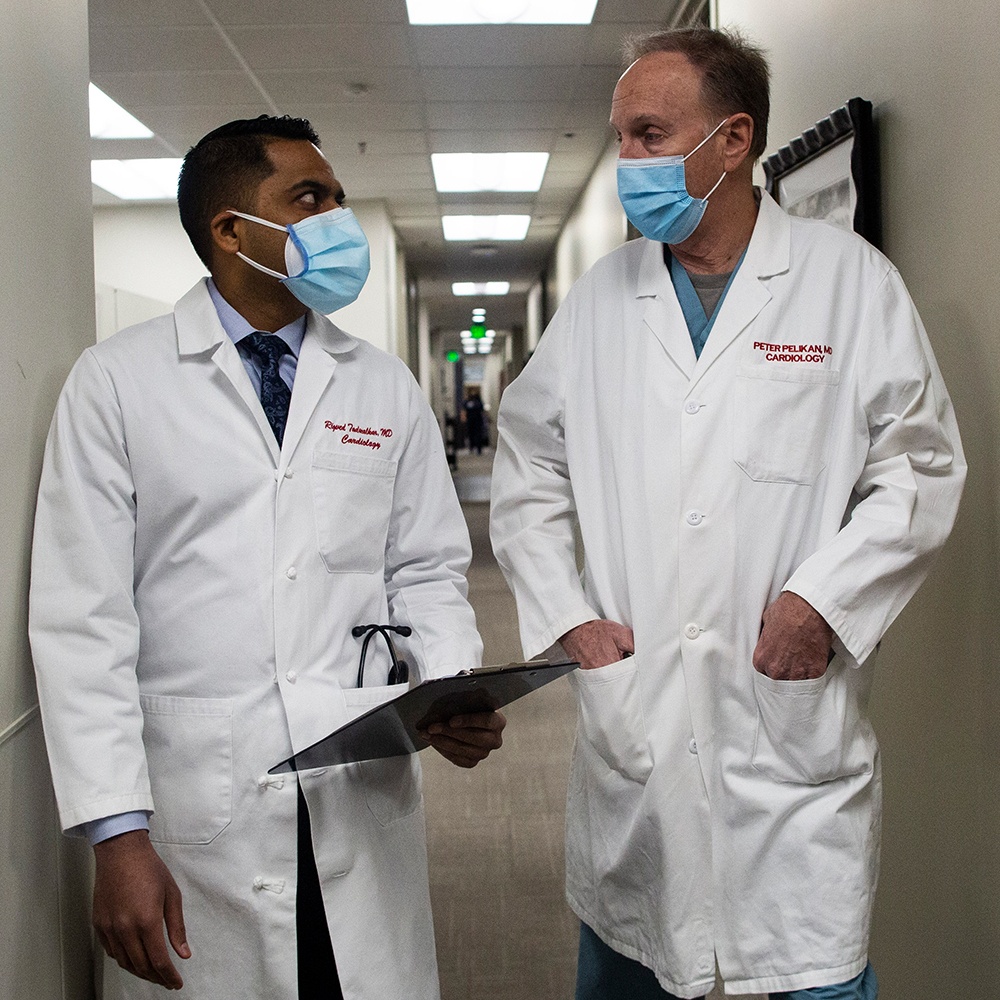Implantable Cardiocerter-Defibrillator

Overview
What is an Implantable Cardiocerter-Defribillator?
An implantable cardiocerter-defribillator (ICD) is a small device that your doctor implants in your chest to monitor and regulate your irregular heart rhythm or arrhythmias. An ICD is a minimally invasive procedure where your doctor places the device under the skin below your left collarbone. The device has one or more insulated wires that run from the device through veins to your heart. When the ICD detects a dangerous heart rhythm, it gives your heart an electrical shock in order to get your heart to beat normally. Your doctor may recommend an ICD if diagnostic tests show you be at risk from dying due to a life threatening arrhythmias and at risk for sudden cardiac arrest. The ICD is smaller than a deck of cards and contains a battery and a small computer that monitors your heart rate.
Why
Why is an Implantable Cardiocerter-Defribillator Done
Your doctor may recommend an ICD for the following reasons:
- You have a heart weakened by heart disease or you’ve had a previous heart attack.
- You are at risk of having ventricular arrhythmia, which is abnormal heartbeat in your lower ventricles that may cause you to have a cardiac arrest.
- You have experienced ventricular arrhythmia and are at risk of having another one.
- You have an enlarged or thickened heart muscle.
- You have heart failure.

Risks
Implantable Cardiocerter-Defribillator Potential Risks and Complications
An ICD procedure may potentially cause the following:
- Welling, bleeding, pain and infection at the incision site.
- Blood clots
- Fluid buildup around the heart.
- Collapsed lung.
- Heart attack.
- Damage to your heart, valves or arteries.
Your doctor will discuss the benefits and risks of this procedure so you can make an informed decision.

Prep
Preparing for an Implantable Cardiocerter-Defribillator
Your doctor will give you specific instructions to prepare for an ICD, such as no food or water at midnight prior to the procedure and other instructions.
What to Expect
What to Expect During a Implantable Cardiocerter-Defribillator
During the Procedure
Here’s what happens during an ICD:
- You’ll probably be awake and mildly sedated, although in some cases general anesthesia may be used.
- You’ll have a local anesthetic to numb your chest area.
- After making small incisions, your doctor will thread the insulated leads (wires) into veins near your collarbone, and guided by X-ray images, into your heart.
- Once the leads are secured to your heart, they will be connected to the device and the doctor will test it and program it for your heart rhythm problem.
- Testing the device may require speeding your heart and then shocking it back into normal rhythm.
- The procedure generally takes one to three hours.
- You’ll probably go home that day after the anesthesia wears off and you’ll need to have a ride home.
After the Procedure
Recovery can take a few days to a few weeks. Your doctor will give you specific instructions as to daily activities and the pace of your recovery, including:
- Your doctor will give you a prescription for your pain, but don’t take aspirin as it can increase the risk of bleeding. Be sure to let your doctor if pain persists or you are experiencing other symptoms or discomfort.
- Avoiding abrupt movements that raise your left arm about shoulder-height for a couple of weeks so that leads in your heart don’t move until the area has healed.
- You shouldn’t drive until you’ve healed and given clearance by your doctor.
- After you recover, you will see your doctor to program your device.
- Your doctor will recommend certain lifestyle and diet changes based on your overall condition.
- The batteries in your device will last for 5 to 7 years. You’ll need another procedure to replace the batteries but this procedure will be less complicated.
- Electrical interference with your device are rare, but you should take the following precautions:
- You can safely use your cell phone or other devices, but it’s advised to avoid placing your cell phone within 6 inches of your ICD.
- You’ll receive a card that states you have an ICD as you may set off alarms at airport security systems.
- Be sure to let healthcare workers that you have an ICD as tests such as an MRI and others are not recommended.
- Don’t stand any closer that 2 feet or more to power generators such as high-voltage transformers or motor-generated systems.
- Headphones and magnets may also interfere with your ICD.
- If you have an ICD to treat ventricular arrhythmias, the American Heart Association recommends not driving for the first six months after your procedure. You should discuss this with your doctor.
- If you become terminally ill, your IDC can still deliver shocks if it isn’t deactivated. This is an easy procedure and deactivating the device will not cause your heart to stop, but can prevent unwanted shocks. You should discuss this with your doctor.
Specialists